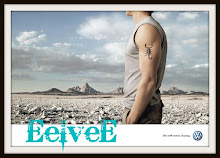Once your film is in the can, you need to get it digitised, edited and transferred onto a usable format.
film
Your film will need to be taken to a laboratory to be developed and digitised (so that you can edit it digitally). Digitising of film is referred to as telecine (or TK), and you will end up with digital rushes (either Digibeta or Beta SP). There are a number of labs that do this and you should call them all for quotes and deals – check out a full list on: www.theknowledgeonline.co.uk or www.kays.co.uk, both have full company listings, but you will need to subscribe to get the best out of the sites.
You can then take your digital tape to a post-production company, who will conform it onto their system and synch up the sound, ready for the editor to weave their magic.

digital
Essentially, shooting on digital is a much easier route than film, as you don’t need to get the rushes developed or digitised. But the rushes will still need to be conformed and have the sound synched up.
There are a large number of post-production houses, also referred to as post facilities, around the country and you should spend some time talking to them to get quotes and rates. For a comprehensive list of post-production houses check out listings in: www.4rfv.co.uk/brieflisting
www.theknowledgeonline.co.uk and www.kays.co.uk both have full company listings, but you will need to subscribe to get the best out of these sites.
editing
There are three different options here:
editing at home
There are a number of software options you can use to edit at home, which one you go for depends on personal preference and what you want to achieve. You could search for video editing software at www.comparestoreprices.co.uk - this, essentially, looks at prices of the different packages you can buy, but also has a look at how they work and what they do. Even the most advanced editing software can be set up in your bedroom: all you need is the software and enough memory in your computer to be able to work with your rushes.
editing in a facility
This is where finances will again be relevant. If your editor has a relationship with any facilities house then you might be able to use ‘down time,’ at weekends or in the evenings. Alternatively, you can buy a copy of Screen International or Broadcast and see the listings in the back.
hiring an editing kit (with or without an editor)
A good middle ground between editing yourself and going into a post-production house is to hire a kit from someone, who will also (for a price) edit for you.
sound post-production
The editor will be the first to deal with the sound in post-production, but often the real work will take place in a special studio with a sound engineer (also called a sound designer). The sound designer will mix together the different tracks and add foley (sound FX). This then needs to be laid back onto the orginal film.
the end product
Short films can originate on film or digital tape and they can be finished, regardless of what they originated on, on film or tape. You have reasons for making your film and these reasons will inform how, and on what format, the film will be screened.
It is worth noting that many festivals accept films on a digital format, but some of the biggest ones require you to have a 35mm print. Always bear in mind that finishing on 35mm film is the most expensive and lengthiest option.

No comments:
Post a Comment